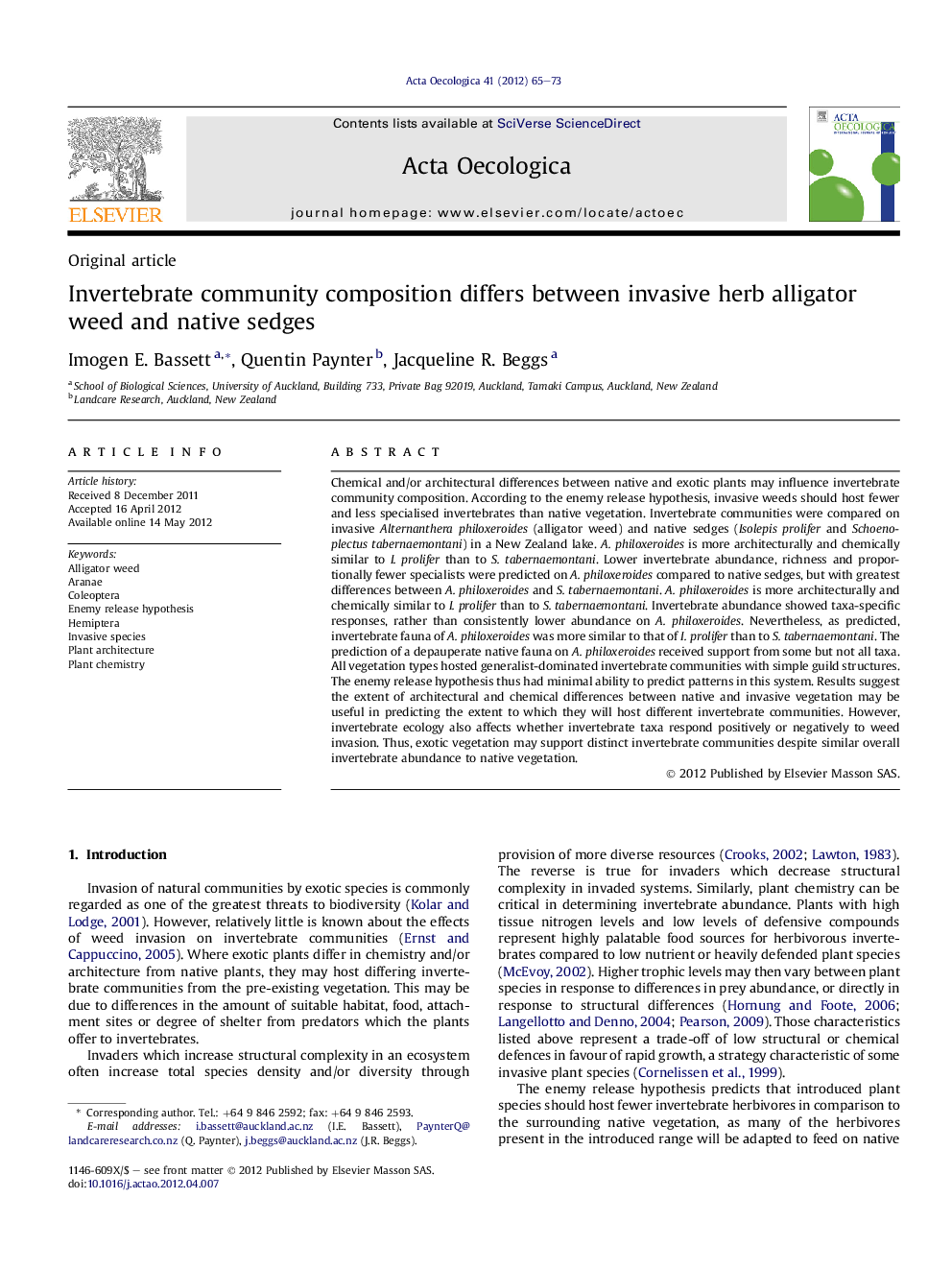| کد مقاله | کد نشریه | سال انتشار | مقاله انگلیسی | نسخه تمام متن |
|---|---|---|---|---|
| 4381121 | 1617730 | 2012 | 9 صفحه PDF | دانلود رایگان |

Chemical and/or architectural differences between native and exotic plants may influence invertebrate community composition. According to the enemy release hypothesis, invasive weeds should host fewer and less specialised invertebrates than native vegetation. Invertebrate communities were compared on invasive Alternanthera philoxeroides (alligator weed) and native sedges (Isolepis prolifer and Schoenoplectus tabernaemontani) in a New Zealand lake. A. philoxeroides is more architecturally and chemically similar to I. prolifer than to S. tabernaemontani. Lower invertebrate abundance, richness and proportionally fewer specialists were predicted on A. philoxeroides compared to native sedges, but with greatest differences between A. philoxeroides and S. tabernaemontani. A. philoxeroides is more architecturally and chemically similar to I. prolifer than to S. tabernaemontani. Invertebrate abundance showed taxa-specific responses, rather than consistently lower abundance on A. philoxeroides. Nevertheless, as predicted, invertebrate fauna of A. philoxeroides was more similar to that of I. prolifer than to S. tabernaemontani. The prediction of a depauperate native fauna on A. philoxeroides received support from some but not all taxa. All vegetation types hosted generalist-dominated invertebrate communities with simple guild structures. The enemy release hypothesis thus had minimal ability to predict patterns in this system. Results suggest the extent of architectural and chemical differences between native and invasive vegetation may be useful in predicting the extent to which they will host different invertebrate communities. However, invertebrate ecology also affects whether invertebrate taxa respond positively or negatively to weed invasion. Thus, exotic vegetation may support distinct invertebrate communities despite similar overall invertebrate abundance to native vegetation.
► We examine invertebrate community composition on an invasive herb and native sedges.
► Similar chemistry and architecture between plants increases invertebrate similarity.
► Direction of plant effect on abundance varies between invertebrate taxa.
► Some but not all native invertebrates reduced on weed compared with native plants.
► All plants dominated by generalist invertebrates with simple guild structures.
Journal: Acta Oecologica - Volume 41, May 2012, Pages 65–73